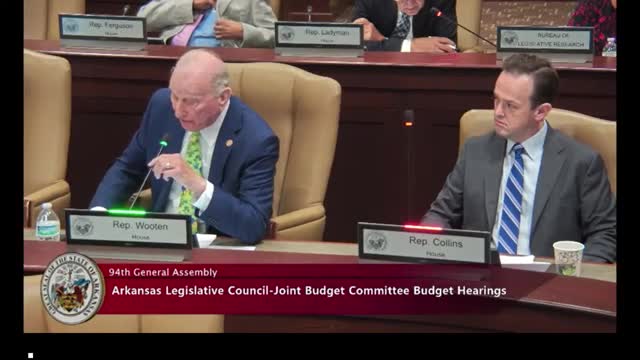Arkansas officials defend $402 million funding for private school vouchers amid public school concerns
This article was created by AI summarizing key points discussed. AI makes mistakes, so for full details and context, please refer to the video of the full meeting. Please report any errors so we can fix them. Report an error »

In a recent government meeting, Arkansas lawmakers engaged in a heated discussion regarding the state's private school voucher program, which has seen a significant increase in participation. Currently, 18,000 students are enrolled in the program, a number that could potentially triple in the next two bienniums, leading to an estimated funding requirement of $402 million for 54,000 students. This projection raised concerns among lawmakers about the impact on the 400,000 public school students in Arkansas.
One lawmaker questioned how such a substantial allocation for private education could be justified without adversely affecting public school funding. The administration defended the program, asserting that the funding for the voucher system comes from a separate stream and does not detract from the adequacy fund, which is designed to meet constitutional education standards for public schools. They emphasized that the budget is structured to support both public and private education simultaneously.
The discussion highlighted a fundamental disagreement over the implications of funding private education with taxpayer dollars. Critics argued that it is unjust to allocate such significant resources to families who can afford private schooling, suggesting that this could lead to a scenario where private schools receive more funding per student than public schools. They expressed concern that this trend could undermine the public education system, which serves the majority of students in the state.
The administration maintained that the voucher program is a matter of state policy, having been debated and legislated, and reiterated their commitment to uphold the law. The conversation underscored the ongoing tension between school choice advocates and those who prioritize public education funding, raising questions about the future of educational equity in Arkansas.
As the meeting concluded, the implications of these discussions remain significant for the state's educational landscape, with lawmakers poised to continue addressing the balance between public and private education funding in future sessions.
One lawmaker questioned how such a substantial allocation for private education could be justified without adversely affecting public school funding. The administration defended the program, asserting that the funding for the voucher system comes from a separate stream and does not detract from the adequacy fund, which is designed to meet constitutional education standards for public schools. They emphasized that the budget is structured to support both public and private education simultaneously.
The discussion highlighted a fundamental disagreement over the implications of funding private education with taxpayer dollars. Critics argued that it is unjust to allocate such significant resources to families who can afford private schooling, suggesting that this could lead to a scenario where private schools receive more funding per student than public schools. They expressed concern that this trend could undermine the public education system, which serves the majority of students in the state.
The administration maintained that the voucher program is a matter of state policy, having been debated and legislated, and reiterated their commitment to uphold the law. The conversation underscored the ongoing tension between school choice advocates and those who prioritize public education funding, raising questions about the future of educational equity in Arkansas.
As the meeting concluded, the implications of these discussions remain significant for the state's educational landscape, with lawmakers poised to continue addressing the balance between public and private education funding in future sessions.
View full meeting
This article is based on a recent meeting—watch the full video and explore the complete transcript for deeper insights into the discussion.
View full meeting